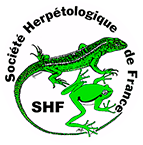Actions
LIFE CROAA is structured around 17 actions divided into 6 working axes:
1. Improvement of knowledge
This first axis will have to permit to acquire new knowledge for the implementation of concrete conservation actions. In particular, an inventory of the African clawed frog (Xenopus laevis) and Bullfrog (Lithobates catesbeianus) nuclei will be carried out at the beginning of the project and new techniques will be developed and tested in order to increase the capturability of individuals. Finally, a control strategy will be developed for the nuclei of African clawed frog and Bullfrog too large for which eradication is not an option.
Improvement of knowledge
- A2. Update of the distribution or front of colonization of Xenopus laevis and Lithobates catesbeianus
- A3. Improvement of capture techniques
- A4. Definition of optimal control strategies for large invasive Amphibian nuclei
2. Management of Bullfrog and African clawed frog invasive populations
This is the heart of the project. This second axis includes all the field actions that will be implemented to control the populations of Bullfrog and African clawed frog present in France, contributing to the poor conservation status of local populations of indigenous invertebrates and Amphibians. Depending on the species targeted and the characteristics of each nucleus, the actions will be adapted.
Management of Bullfrog and African clawed frog invasive populations
- A1. Preparation for field actions
- C2. Eradication of small nuclei of Lithobates catesbeianus
- C3. Protection of sites with stakes in the large nuclei of Xenopus laevis and Lithobates catesbeianus
- C4. Application of control strategies in the large nuclei of Xenopus laevis and Lithobates catesbeianus
3. Prevention of new introductions of exotic Amphibians
The LIFE CROAA plans the development of a watchfulness system, whose objective will be to ensure a very rapid feedback when a new species of exotic Amphibian will be observed in the field. This system of early detection will rely in particular on a large network of local actors and on the managers expertise of natural areas and scientists.
Moreover, public awareness will be a strong focus of the project in order to avoid releases in the natural environment of individuals of exotic species held in captivity. Specific actions are planned (adapted communication media, activities for the general public, training courses …).
Prevention of new introductions of exotic Amphibians
- C1. Implementation of an early detection and evaluation system
- E2. Awareness of the issue of invasive alien Amphibians and dissemination of project results
4. . Information, awareness-raising and sharing of knowledge
The fight against invasive alien species require information and raising public awareness. In the case of invasive alien Amphibians, this concerns the general public, young people, decision-makers and public institutions, pet shops, breeding centres and terrariophiles. Actions E1 and E2 plan the development of multiple communication media adapted to the different targeted audiences.
Another objective of this working axis is to widely disseminate the knowledge and experience gained during the project, to French and European actors concerned by the same issue.
Information, awareness-raising and sharing of knowledge
- E1. Planning and implementation of communication
- E2. Awareness of the issue of invasive alien Amphibians and dissemination of project results
5. Scientific monitoring and evaluations
In order to evaluate the effect of the control of the Bullfrog and the African clawed frog, monitoring of local populations of indigenous invertebrates and Amphibians is planned at the beginning and the end of the project. This will assess the impact on the resilience of the ecosystems affected by the presence of invasive alien Amphibians. In parallel, field actions will be evaluated to ensure their effectiveness and to adapt them if necessary.
Socio-economic aspects are important in the fight against invasive alien species. Indicators will be monitored annually in order to analyze at the end of the project the socio-economic impact of the project and more precisely of the control measures.
Scientific monitoring and evaluations
- D1. Evaluation of the impact and effectiveness of concrete conservation actions
- D2. Assessment of restoration of ecosystem functions
- D3. Assessment of the socio-economic impact of the project
- D4. Assessment of the LIFE indicators
6. Project management and after-LIFE
Two actions are planned for the technical, administrative and financial coordination of the project. A conservation and communication plan will be drafted at the end of the project. The objective of this document is to define the strategy to be implemented to continue the fight against invasive alien Amphibians and to identify the actions that will have to be sustained at the end of the project.
Project management and
after-LIFE- F1. General coordination of the project and animation of the committees
- F2. External audit
- F3. Conservation and communication plan after-LIFE


